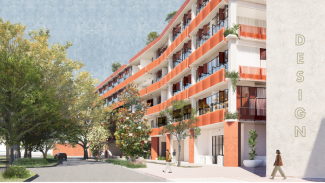
IPAL at 10: Program expansion sparks support and debate
Faculty and students reflect on the successes and challenges of IPAL’s first decade.
It has been 10 years since the National Council of Architectural Registration Boards (NCARB) introduced its Integrated Path to Architectural Licensure (IPAL) program. IPAL almost halves the time it traditionally takes to complete the education, internship hours, and exams required for licensure. Twenty-eight schools with 33 programs across the United States offer IPAL options approved by the National Architectural Accrediting Board (NAAB).
Licensure takes an average of 13.3 years, NCARB data states. However, IPAL aims to put practitioners in the field sooner, and students can complete the process in as few as seven years. Another benefit is companionship: Studying for the Architect Registration Examination (ARE) tests can be daunting alone, but studying for them concurrent with education can help students find support from peers and faculty. Additionally, the Architectural Experience Program (AXP) required by both traditional licensing programs and IPAL give students time to work alongside pros.
Broadening IPAL’s reach
To increase IPAL’s availability, NCARB recently enacted policy changes. Most notably, two-year community colleges with pathways for students to enroll in an NAAB-accredited program will be eligible for IPAL, as will four-year undergraduate programs that lead to a NAAB-accredited master’s program. Per a press release shared by NCARB, the changes “are designed to make the IPAL option accessible to a wider range of academic programs, while refining the student requirements to be more focused and achievable.”
One of the first schools to offer IPAL was the Savannah College of Art and Design (SCAD) in Savannah, Ga. The school now has the country’s third-largest IPAL enrollment number. Cristina Gutierrez, SCAD’s IPAL coordinator and adviser, sees the program’s expansion as an “exciting opportunity.”
“It allows us to have more diverse backgrounds enrolled in our program,” Gutierrez says. “It’s only going to increase our enrollment. I think that’s very exciting actually, to see that there are more ways of accomplishing IPAL, and we’re allowing it to expand to different communities.”
The program has already aimed to diversify the student body of architecture programs by allowing a new pathway to licensure. “Data has even shown there’s a higher drop off of females and minorities as they pursue licensure,” says Gutierrez. “[IPAL] gives them the opportunity to begin their careers from a position of more choice, and this expands the pipeline of architects we see in leadership in the future.”
Encouragingly, in 2024, NCARB published data indicating a rise in the number of architects who identify as women or people of color. While it is unclear how many of those new architects came out of IPAL programs, SCAD has seen direct evidence of IPAL’s strengths. SCAD’s first three IPAL graduates completed the program in 2023. For students like Liv Garcia, who earned SCAD’s Master of Architecture degree and achieved licensure through IPAL concurrently, the program was a way to achieve a lifelong dream.
“I was just ready to jump in,” Garcia says of her decision to attend SCAD and take part in their IPAL program. “I wanted to immediately immerse myself in the architecture world and what that meant. And what better way than to weave [together] all three of experience, education, and taking the exams and other licensure requirements?”
Garcia recently became the state of Georgia’s youngest licensed architect, and she now works at a South Carolina firm as a project manager. Throughout her childhood in her native Dominican Republic, Garcia felt inspired by the built environment around her, leading to her career path.
“It doesn’t feel like after you’re graduating, you’re thrown into the professional workforce,” Garcia says, reflecting on how Gutierrez broke down the IPAL program to her as a prospective student. “It didn’t feel like there were going to be huge milestones that you had to cross. Just small, achievable goals. And I think that’s why it was so digestible, because it was so clearly represented as something that could be attainable.”

Emphasizing the importance of licensure early
To the north in Baltimore, Md., Morgan State University’s School of Architecture & Planning is the first Historically Black College and University (HBCU) to offer the IPAL program. “HBCUs produce seven out of 10 licensed Black architects in America,” says Abimbola Asojo, who is the dean and a professor at Morgan State University’s School of Architecture and Planning. “It’s really important that we create those pathways to licensure for students at our institution. The advantage of the IPAL program for us is [that we can emphasize] the importance of getting licensed early when students are in school.”
IPAL has been at Morgan State for five years and has five students currently enrolled. Asojo has seen connections and networking benefit students while they pursue the AXP hours required for licensure. “As students are interning and working in firms, they’re having access to all the resources that the firms can make available to them. So it’s like a community, and it definitely takes a village,” says Asojo.
Morgan State also offers a 3+2 program, which is an accelerated path toward bachelor and master’s degrees. Students can opt for this in combination with IPAL, further supporting their career goals and paths to licensure.
Despite the successes of students and growth of the program, IPAL has still been met with skepticism by some. Certain critics are concerned that IPAL graduates may be seen as having inferior skills by hiring managers; others decry what they see as a lack of a well-rounded architectural education. “A big misconception that I’ve seen a lot of is [the perception] that the students leaving with their license are inadequate, and I don’t believe that’s the case at all,” says Mike Hill, associate chair of architecture at SCAD. “In fact, our students are leaving with the same, if not more, internship hours than someone is receiving and pursuing it outside. Most of them are working almost full-time and leading projects while they’re here.”
Hill recalls how Garcia worked on a project that had to go through a city planning commission and required community workshops, all while Garcia was a student and working on finishing her final licensure exam. This allowed her firm to see her knowledge and leadership ability.
“I think the same thing exists between all of our IPAL graduates. Seeing that they’ve been in practice, and people have seen the work they’ve done, and they recognize that within their firms they’re not just a student, they’re an actual professional,” Hill says.
Garcia has continued the work she started as an IPAL student with her current professional projects. She’s working on the commercial and residential rehabilitation of an 1850s building in downtown Savannah, and she is also converting a building on Hilton Head Island from an assisted living facility to workforce housing. Her work is grounded in rethinking residential design, which she explored in her thesis. As she develops her career and expands on what started as a student at SCAD, Garcia reflects on how things would be different had she chosen an education and licensure path outside of IPAL at SCAD.
“I wouldn’t be feeling this extremely overwhelmingly positive feeling of joy that I have right now, and this feeling of huge accomplishment. I would still have another five and a half years to go,” Garcia says. “I think at SCAD, they really built a community around architecture in the IPAL program, specifically, so you don’t feel like you’re alone doing this. I felt incredibly supported, and I still do as an alumni.”
M.K. Koszycki is a freelance writer covering culture and design. She lives in Virginia.
